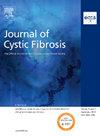WS08.03Remodelling of cystic fibrosis respiratory microbiota in response to extended elexacaftor/tezacaftor/ivacaftor therapy
IF 5.4
2区 医学
Q1 RESPIRATORY SYSTEM
引用次数: 0
Abstract
Objectives
The introduction of the highly effective CFTR modulator Elexacaftor/Tezacaftor/Ivacaftor (ETI) has revolutionised clinical outcomes for adults with CF (awCF) eligible for treatment. Despite this little is understood about the long-term impact of ETI on the respiratory microbiota in awCF. In this multi-centre study, we investigated changes to the respiratory microbiota of awCF from before onset of ETI therapy to on-ETI therapy of up to 3 years.
Methods
Respiratory samples were collected from 303 awCF from 6 centres in the UK (Cardiff, Manchester, & Southampton), Canada (Calgary), and USA (Dartmouth & Vermont). This consisted of pre-ETI samples stratified to severe, moderate, and mild disease groups based on %FEV1, and on-ETI samples taken at approximately 6 months, 1, 2, & 3 years. Samples from 11 non-CF healthy participants were included as a comparator group. Microbiota sequencing was performed on all samples.
Results
Microbiota diversity increased with therapy duration. With diversity at years 2 and 3 being comparable (P>0.05) to that observed in the mild disease pre-ETI and healthy groups. Microbiota composition became increasingly similar to mild CF/healthy groups with increasing therapy duration but was still significantly different (P<0.05) at 3 years. Dominance of CF pathogens reduced with therapy duration, with a shift to microbiota characterised by strict anaerobes associated with better clinical outcomes. Despite the reduction in abundance many CF pathogens still persisted.
Conclusions
Long-term ETI therapy resulted in positive changes in the respiratory microbiota, typically associated with better clinical outcomes and microbiota more closely resembling mild CF/healthy microbiota. Despite a positive trajectory towards a healthy-like microbiota, we posit that progression in awCF is impeded by the cumulative effects of progressive airway and lung parenchymal damage, along with the impacts of long-term and continued antibiotic therapy.
囊性纤维化呼吸微生物群重构对延长elexexaftor /tezacaftor/ivacaftor治疗的反应
高效CFTR调节剂Elexacaftor/Tezacaftor/Ivacaftor (ETI)的引入彻底改变了适合治疗的成人CF (awCF)的临床结果。尽管如此,人们对ETI对awCF呼吸微生物群的长期影响知之甚少。在这项多中心研究中,我们调查了从ETI治疗开始前到ETI治疗后长达3年的awCF呼吸微生物群的变化。方法从英国6个中心(卡迪夫,曼彻斯特,&;南安普敦),加拿大(卡尔加里)和美国(达特茅斯&;佛蒙特州)。这包括基于%FEV1的eti前样本分为严重、中度和轻度疾病组,以及大约6个月、1、2和1个月时的eti后样本。3年。来自11名非cf健康参与者的样本被纳入比较组。对所有样品进行微生物群测序。结果微生物群多样性随治疗时间延长而增加。第2年和第3年的多样性与轻度疾病前eti组和健康组相当(P>0.05)。随着治疗时间的延长,微生物群组成与轻度CF/健康组越来越相似,但在3年时仍有显著差异(P<0.05)。CF病原体的优势随着治疗时间的延长而减少,以严格厌氧菌为特征的微生物群的转变与更好的临床结果相关。尽管丰度降低,许多CF病原体仍然存在。结论:长期ETI治疗导致呼吸道微生物群的积极变化,通常与更好的临床结果和更接近轻度CF/健康微生物群的微生物群相关。尽管朝着健康样微生物群的方向发展是积极的,但我们假设awCF的进展受到进行性气道和肺实质损伤的累积效应以及长期和持续抗生素治疗的影响的阻碍。
本文章由计算机程序翻译,如有差异,请以英文原文为准。
求助全文
约1分钟内获得全文
求助全文
来源期刊

Journal of Cystic Fibrosis
医学-呼吸系统
CiteScore
10.10
自引率
13.50%
发文量
1361
审稿时长
50 days
期刊介绍:
The Journal of Cystic Fibrosis is the official journal of the European Cystic Fibrosis Society. The journal is devoted to promoting the research and treatment of cystic fibrosis. To this end the journal publishes original scientific articles, editorials, case reports, short communications and other information relevant to cystic fibrosis. The journal also publishes news and articles concerning the activities and policies of the ECFS as well as those of other societies related the ECFS.
 求助内容:
求助内容: 应助结果提醒方式:
应助结果提醒方式:


